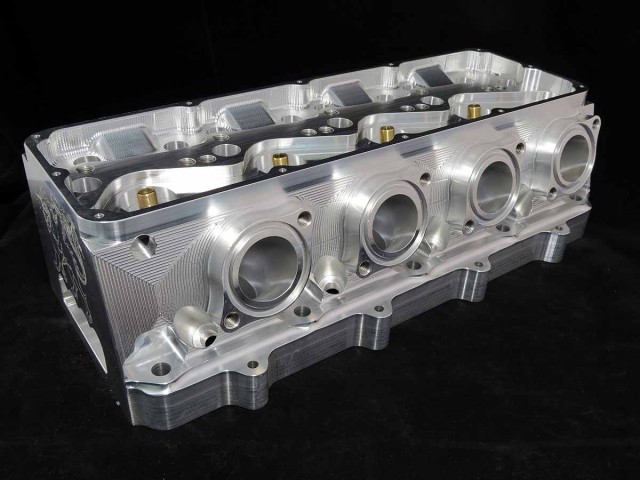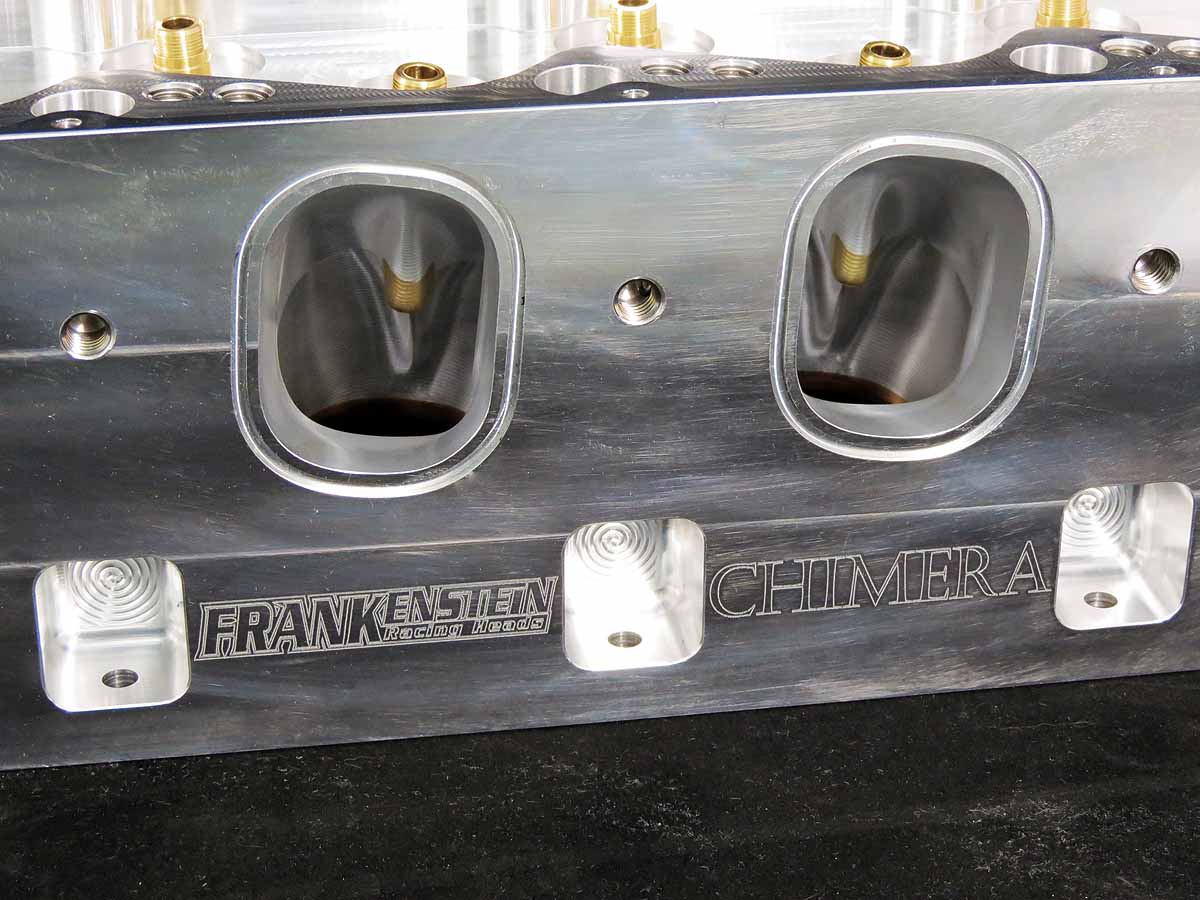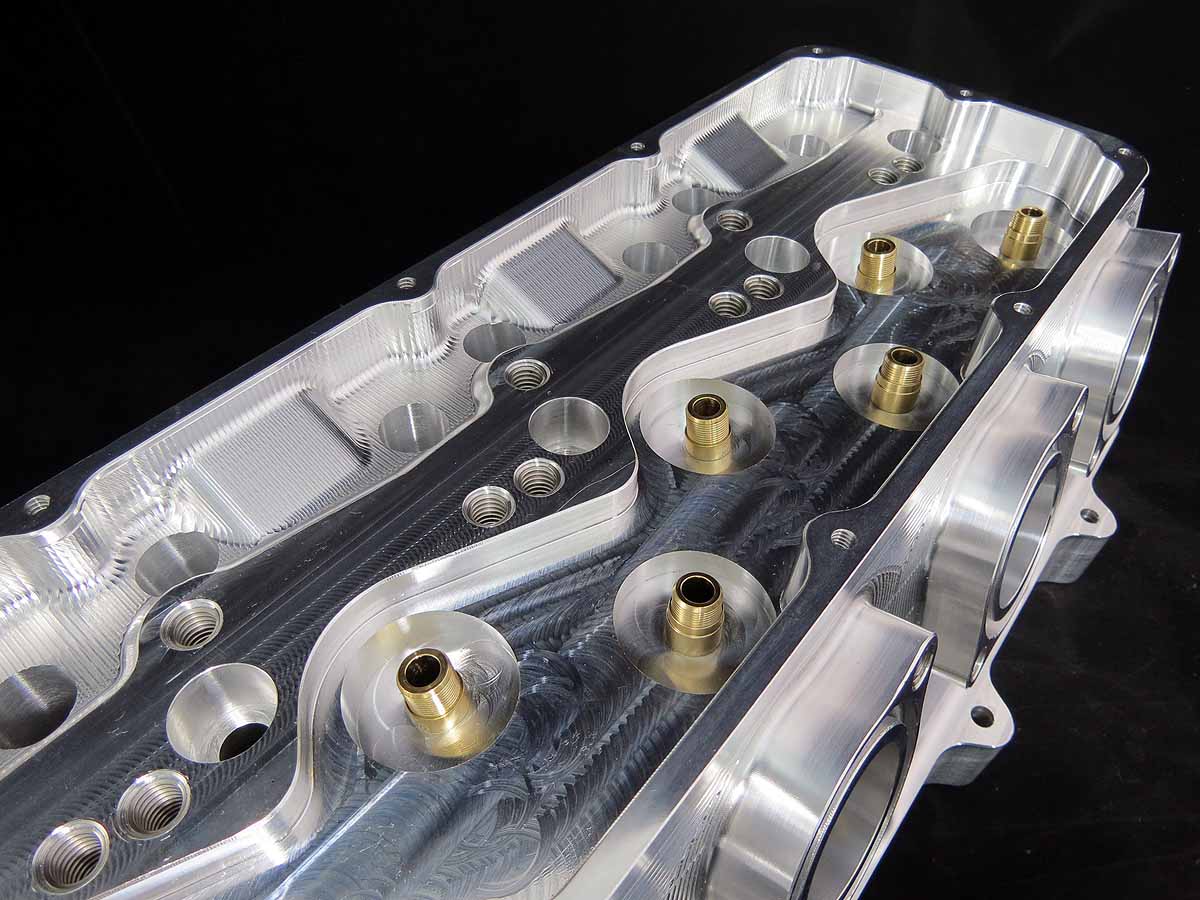When perusing the available racing cylinder heads for the LS market, Frankenstein Racing Heads‘ proprietor Chris Frank realized there was a hole in the marketplace for an all-out, no compromises cylinder head for those top-echelon racers looking to make insane horsepower.
“We feel very strongly that there is absolutely no serious racing head for the LS community,” says Frank. “Our Reaper cylinder head, which is built off the Edelbrock LS-R head, has great performance for a decent price, but our new Chimera cylinder heads for the LS engine are a clean sheet design.”
The company was approached by a number of competitors from across the pond who compete in Australian Pro Stock, which has a small-block, 400 cubic inch maximum powerplant displacement, and were looking for the ultimate in cylinder head performance.
Left - Intake ports were designed to provide the best line-of-sight to the valve. These heads will require a custom intake manifold. Right - Valvetrain components are also designed for this specific cylinder head and are currently in development by both Jesel and T&D. They should be available shortly.
“The first thing we settled on were valve dimensions on the particular bore size. The second problem we had was how to fit those valve sizes in the bore. We have a 2.300-inch intake valve and 1.580-inch exhaust valve on this particular set of heads,” says Frank.
The first release of the cylinder head has been developed for this all-out, naturally-aspirated combination, but Frank says that the design is adaptable for engines from 330 cubic inches up to 450-plus displacement sizes.
“We’re able to get the same exact amount of flow, or better, than our competitors, because the exhaust port flows 310cfm with this valve size. The way we approached it was to worry about port shape and design rather than valve size. By getting the valve location and port shape we wanted, the head performs well above any of the larger-valve stuff with the 1.580-inch exhaust valve on a 4.200-inch bore. The head in this configuration will work on a 4.185-inch bore also,” says Frank.
No Compromises Performance
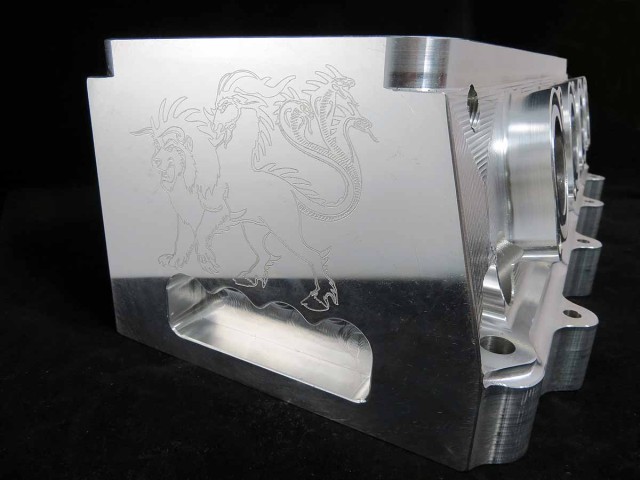
The massive cylinder head has a thick deck surface for stability in power adder applications and offers and no-compromises performance.
Don’t think that the head only performs well on a naturally-aspirated application, however. Frank says that one competitor in the LS power-adder world has already inquired about a set for an all-out twin-turbo application. For that application, the valve angle will be rolled back to make the head not so sensitive, and a specific power-adder head is in development as well.
Currently, the head uses a 7.5-degree angle on the intake valve, with a 4 degree cant, and he says the power-adder application will be rolled back to 10 or 11 degrees with the same cant. The exhaust side has a 5 degree angle with a 3 degree cant, and the power adder head will use a larger valve, possibly a 1.620-inch valve, with a 2.260-inch intake valve, and the same exhaust valve angles.
“The exhaust flow becomes more crucial than the intake flow on a power-adder application,” notes Frank.
The intake and exhaust port locations are very high off the deck – a raised runner intake port location with a very good line of sight to the chamber, and an exhaust port that’s very tall and straight, which allows the company to keep the flow straight as long as possible, before turning it inside the port instead of crashing it into the header tube.
“We built the exhaust port to where it goes straight, and it almost has a built-on pipe to it that will straighten the air out as it goes into the header,” he says.
Valvetrain components are in development at both Jesel and T&D. Rocker positioning needs to be relocated, and Frank already has it mapped out and is awaiting completion of the final product from those companies. A custom sheetmetal or billet intake manifold will be required to match the new port location, as the ports are not positioned on-center, but where they’ll have the best line of sight.
“So many people design a high performance head, but they are designed around parameters where mass quantities of people can use them. We looked at it as we’re going to design something out of the box, so it needed to be completely from scratch. Our valve placement – the valves are drastically rotated, as much as possible, but so that they still fit under a reasonable valve cover,” says Frank.
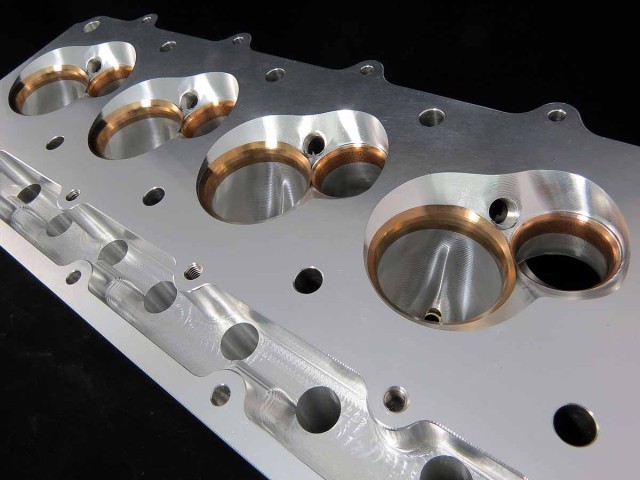
Combustion chambers have the valve positions moved, and can be customized for particular applications. Valve sizes will vary according to the intended use of the head.



